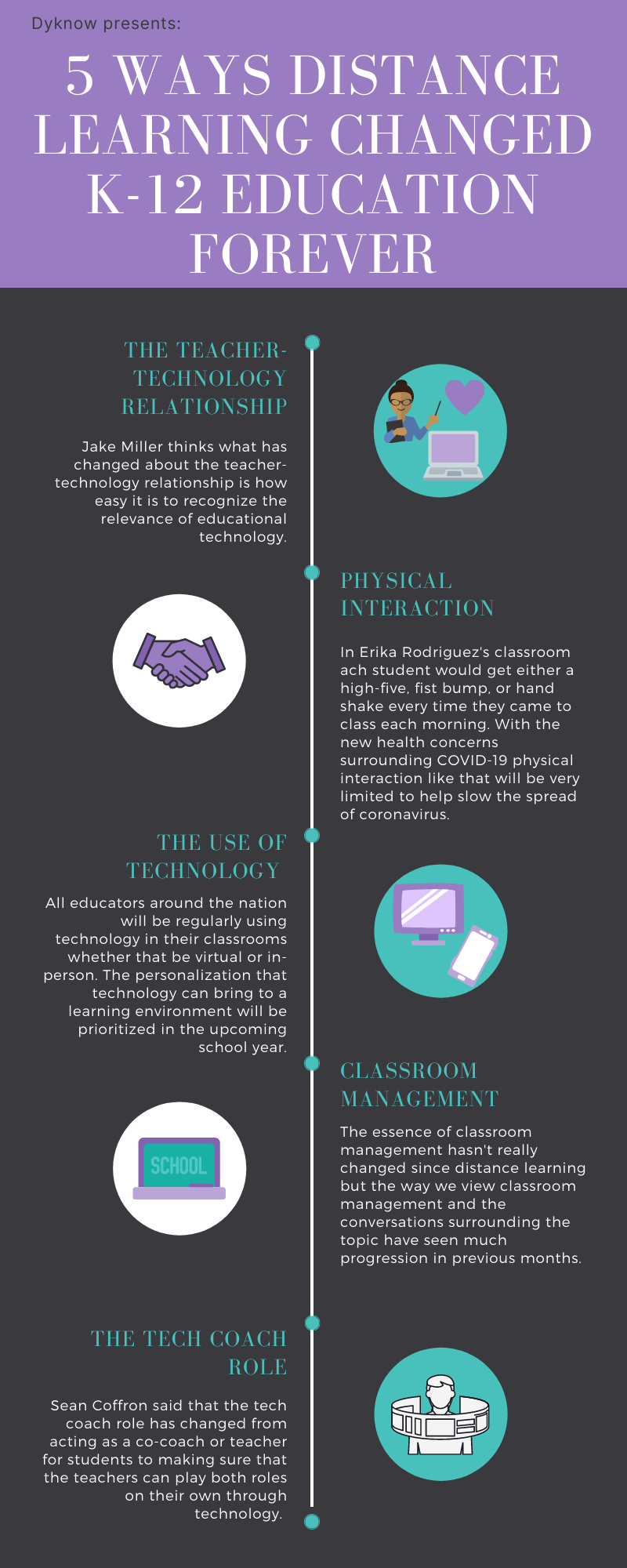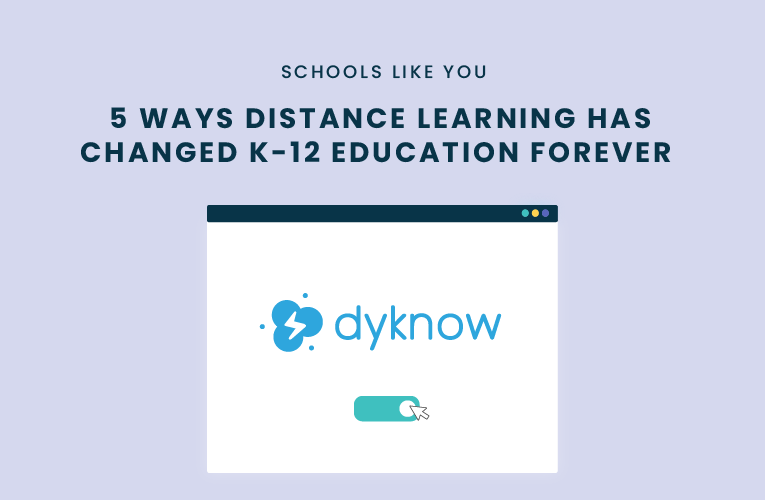The education world is rapidly changing and adapting to the technological advances and different needs of students. Amid COVID-19, schools across the world experienced distance learning for the first time. As a result, K-12 education has faced the inevitable reinvention of what learning is beginning to look like modern-day.
Education Before Distance Learning
Before distance learning, instruction was held, more times than not, in person with a teacher presenting information to a classroom full of students. Many educators had not yet taken the initial steps to incorporate technology regularly into their classrooms which lead to many problems when distance learning began.
Education, before distance learning, focused more on information distribution rather than the specific needs of the students. Teachers traditionally would present the information in lecture or activity format and send students home to apply their learnings. This style of learning was often structured toward one specific learning type rather than a model with the inclusion of all learning types for students.
Education oftentimes unintentionally left out certain types of learners to the point that their opportunity for exponential growth was hindered compared to their peers.
5 Ways Distance Learning has Changed K-12 Education
1. The Teacher-Technology Relationship
As mentioned, prior to distance learning, many teachers did not adapt to technology until the technology was their only option to make learning possible. Distance learning forced teachers to learn how to use technology and create lessons around the tools they already had. Jake Miller, the host of the #EduDuctTape Podcast, Tech Integration Coach, and former STEM teacher, explained that one change to the teacher-technology relationship is how easy it is to recognize the relevance of educational technology. Educators have just now been exposed to the benefits of the technology, in turn, Jake recommends that teachers view technology as a tool that is in place to help solve a problem and make their job a little bit easier.
2. Physical Interaction
One of Erika Rodriguez’s biggest gaps during distance learning was the greetings she gave her students every morning. Each student would get either a high-five, fist bump, or handshake every time they came to class each morning. With the new health concerns surrounding COVID-19, physical interaction like that will be very limited to help slow the spread of coronavirus. Instead, Erika has come up with the solution of doing a random event with her students to start out each morning. During distance learning Erika oftentimes had students be a ‘helping hand’ to their parents and assign a simple task like take out the trash to help promote behavioral skills, social-emotional learning, and also to just help some parents out!
3. The Use of Technology
The use of technology, as a whole, has been forever changed by distance learning. Educators around the nation will be regularly using technology in their classrooms whether that be virtual or in-person. Technology has given teachers the ability to play multiple roles in the classroom as well as give students a tangible application to the lessons learned in class. Because of distance learning teachers learned that some students learn better from technology than they do traditionally and vice versa. The personalization that technology can bring to a learning environment will be prioritized in the upcoming school year.

4. Classroom Management
The essence of classroom management hasn’t really changed since distance learning but the way we view classroom management and the conversations surrounding the topic have seen much progression in previous months. Sean Coffron, Instructional Technology Training Specialist, explained that teachers are still looking to find ways to use these tools to create strong academic relationships with their students. Now that instruction has shifted to online, the question Sean asks is, “How do we replicate the social aspect of in-person instruction in front of a screen?” The next step to incorporating technology into the classroom is figuring out how it works in tandem with student needs.
5. Tech Coach Role
The demand for tech coaches in education is at an all-time high and the need for that support within a school system is essential for successful technology usage. Sean Coffron also explained how the tech coach role has changed since distance learning. He said that the tech coach role has changed from acting as a co-coach or teacher for students to making sure that the teachers can play both roles on their own through technology. This role will now have heavier responsibility for support within a school district and for the professional development of their teachers.
Education, as we look at it now, has a strong focus on how the student learns and what the student needs to succeed. Distance learning forced educators to acknowledge outdated practices and how the use of modern-day technology can benefit the growth of a student’s mind. Technology broadens horizons and creates endless opportunities to find inspiration and grow. COVID-19 changed the course of education to where the future of education is technology.
Listen to our Remote Learning Recap episode on our Tackling Tech Podcast!
In this compilation episode, eleven previous guests in education are featured describing the challenges they faced when the world was turned upside down in March, and students were told to stay home. They share how well prepared their districts were for this unprecedented turn in events and their advice for engaging with students online.
Start teaching confidently with Dyknow for free!
Latest blog articles

Dyknow 2021 Year In Review
In addition to web browser updates and bug fixes, Dyknow released several major product updates, new features and enhancements. Check out Dyknow’s 2021 Year in Review!

The Classroom Management Tool that’s Rated #1 in Satisfaction on G2
K-12 Administrators across the world trust G2 as the #1 platform to find, research, and choose EdTech tools that solve the most pressing problems their teachers are experiencing. In G2's Fall 2021 Reports, Dyknow was once again rated #1 in overall Satisfaction out of...

Bringing Diversity and EdTech to the English Classroom
On this episode of Tackling Tech, Tierra Leustig interviews Scott Bayer about being an anti-racist teacher, diversifying reading lists, creating inclusive learning environments, and leveraging ed-tech in non-technical ELA classrooms. Scott Bayer is a High School...

